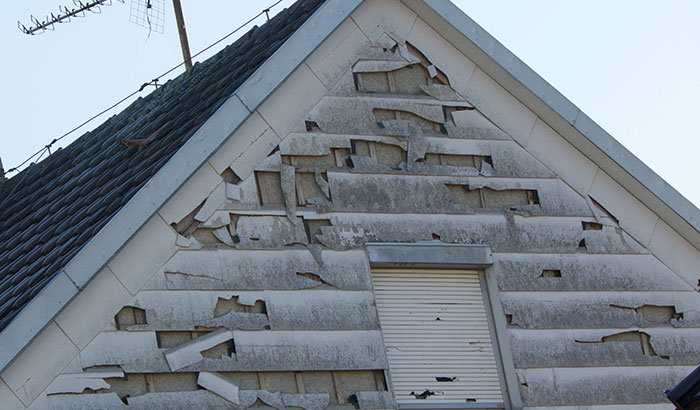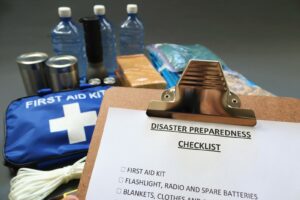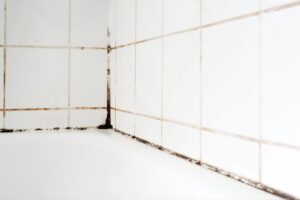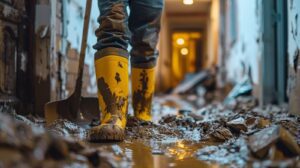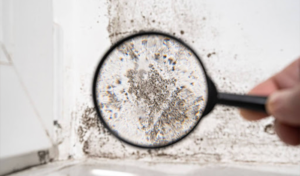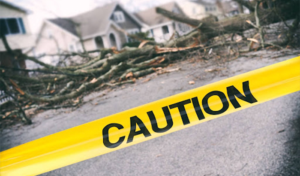Storms can be scary, and their wrath can cause severe storm damage to your home. In this article, we will take a closer look at some of the big players in the storm game and what damage they can do to your home.
1 – Flooding
Flooding is the most common and destructive type of storm damage. It can be caused by heavy rainfall, storm surge, or flash floods and can cause significant damage to homes, businesses, roads, bridges, and other infrastructure.
Here are some of the potential consequences of a flood on your home:
- Structural Damage: Floodwaters can weaken and damage the foundation of your home. The weight of the water can cause walls to collapse, floors to buckle, and roofs to cave in.
- Water Damage: Floodwaters can infiltrate your home, causing water damage to floors, walls, ceilings, and furniture. If left untreated, water damage can lead to mold and mildew growth, which can be hazardous to your health.
- Electrical Damage: Electrical appliances, outlets, and wiring can become damaged by floodwaters, creating a potential fire hazard. Floodwaters can also damage your electrical panel, causing power outages.
- Contamination: Floodwaters can be contaminated with bacteria, viruses, and other hazardous materials. This can pose a risk to your health and require extensive cleaning and disinfecting of your home.
- Pest Infestations: Floodwaters can displace rodents, insects, and other pests, which can make their way into your home and cause additional damage.
- Landscaping Damage: Damage from storms, such as flooding, can lead to erosion of your yard, trees, and landscaping.
2 – Wind Damage
Extreme wind can cause significant damage to homes, and the extent of damage depends on factors such as wind speed, the duration of the wind event, and the strength of the home’s structure.
Here are some potential consequences of extreme wind on your home:
- Roof Damage: High winds can cause damage to the roof, including missing shingles or tiles or complete roof failure.
- Siding and Window Damage: Wind can cause damage to the siding of the home or break windows, leading to water infiltration, damage to interior walls and ceilings, and potentially harm people inside the house.
- Structural Damage: Damage from storms, including strong winds, can be detrimental to the structure of a home, such as the collapse of walls or supports. This can lead to significant property damage and pose a danger to anyone inside the house.
- Damage to Trees and Landscaping: High winds can also cause trees and large branches to fall, potentially causing significant damage to a home, vehicle, or person.
- Power Outages: Extreme winds can cause power outages due to downed power lines, which can cause disruptions to daily life and the risk of food spoilage.
- Debris Damage: Flying debris, such as tree branches, building materials, or other objects, can cause significant damage to the home’s exterior and pose a risk to the safety of those inside the home.
3 – Hail Damage
Hailstorms can cause significant damage to homes and properties. The size and intensity of hailstones and other factors such as wind and storm duration determine the damage’s extent.
Here are some potential consequences of extreme hail on your home:
- Roof Damage: Hail can cause damage to the roof, including missing or broken shingles, tiles, or other roofing materials.
- Siding and Window Damage: Hailstones can also cause damage to the siding of the home, break windows, and damage window frames.
- Gutter Damage: Hail can cause damage to gutters, downspouts, and other drainage systems, leading to water damage to the home’s foundation and basement.
- HVAC Damage: Hailstones can cause damage to HVAC systems, such as air conditioning units and heat pumps, leading to costly repairs or replacements.
- Landscaping Damage: Hail can damage trees, shrubs, and other landscaping features, causing aesthetic damage and potential hazards.
4 – Lightning Strikes
Lightning storms can cause various types of damage to a home, both directly and indirectly.
Here are some potential consequences of a lightning storm on your home:
- Fire Damage: The most common direct damage from lightning strikes is fire. Lightning can strike the roof or other parts of the home and start a fire, which can quickly spread and cause significant damage. This can lead to the loss of personal property.
- Electrical Damage: Lightning can cause surges that damage home appliances, electronics, and electrical systems. These surges can overload and fry wiring, circuit breakers, and outlets. Unplugging electronic devices and appliances during a lightning storm is vital to avoid damage.
- Power Outages: Lightning strikes can also cause power outages, resulting in the loss of perishable food and other items that require electricity. Additionally, power outages can pose a danger to those who rely on medical equipment or have other special needs.
- Structural Damage: Lightning can cause structural damage to a home by creating holes in the roof or walls or knocking over chimneys or other protrusions.
- Risk of Injury: Lightning strikes can pose a risk of injury or death to individuals inside the home, especially if they are near an open window, door, or other objects that conduct electricity. It is important to avoid using phones, electrical appliances, or taking a shower or bath during a lightning storm.
5 – Tornado Damage
Tornadoes are one of the most destructive natural disasters that can strike a home, causing significant damage to the property’s exterior and interior.
Here are some potential consequences of a tornado on your home:
- Structural Damage: Tornadoes can cause significant structural damage to homes, including collapsing walls, roofs, and foundations. The severity of the damage depends on the strength of the tornado, the duration of the storm, and the quality of the home’s construction.
- Roof Damage: Tornadoes can cause significant damage to roofs, including completely removing shingles, tiles, or other roofing materials.
- Window and Door Damage: Tornadoes can break windows and doors, leading to water infiltration, damage to interior walls and ceilings, and potential harm to those inside the home.
- Debris Damage: Tornadoes can cause debris, such as tree limbs, building materials, or other objects, to fly through the air and strike homes, causing significant damage to the exterior and posing a risk to those inside.
- Electrical and Gas Damage: Tornadoes can damage electrical and gas lines, leading to power outages, fires, and potential hazards to those inside the home.
- Water Damage: Tornadoes can cause flooding, leading to water damage to the home’s interior, mold, and other health hazards.
If your home has been the victim of any of these storms, the best thing to do is call a professional to clean up the storm damage.
Total Flood and Fire Restoration
Total Flood and Fire Restoration has trained professionals ready to repair any storm damage to your home and restore it to its former condition. Contact us, and let us clean up your storm damage today! We offer a 24/7 live call at 801-560-9798.

